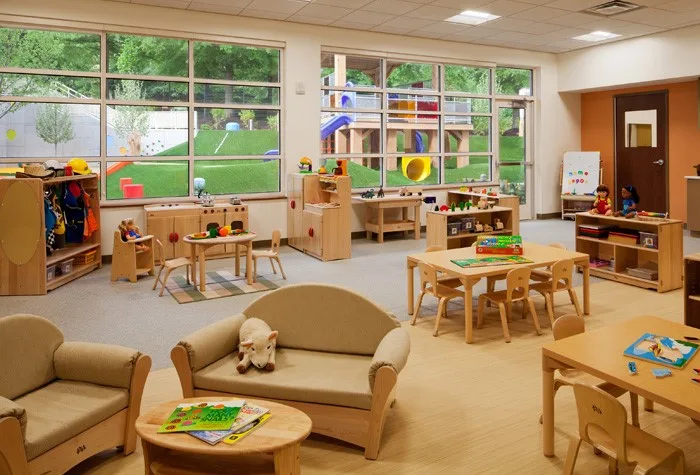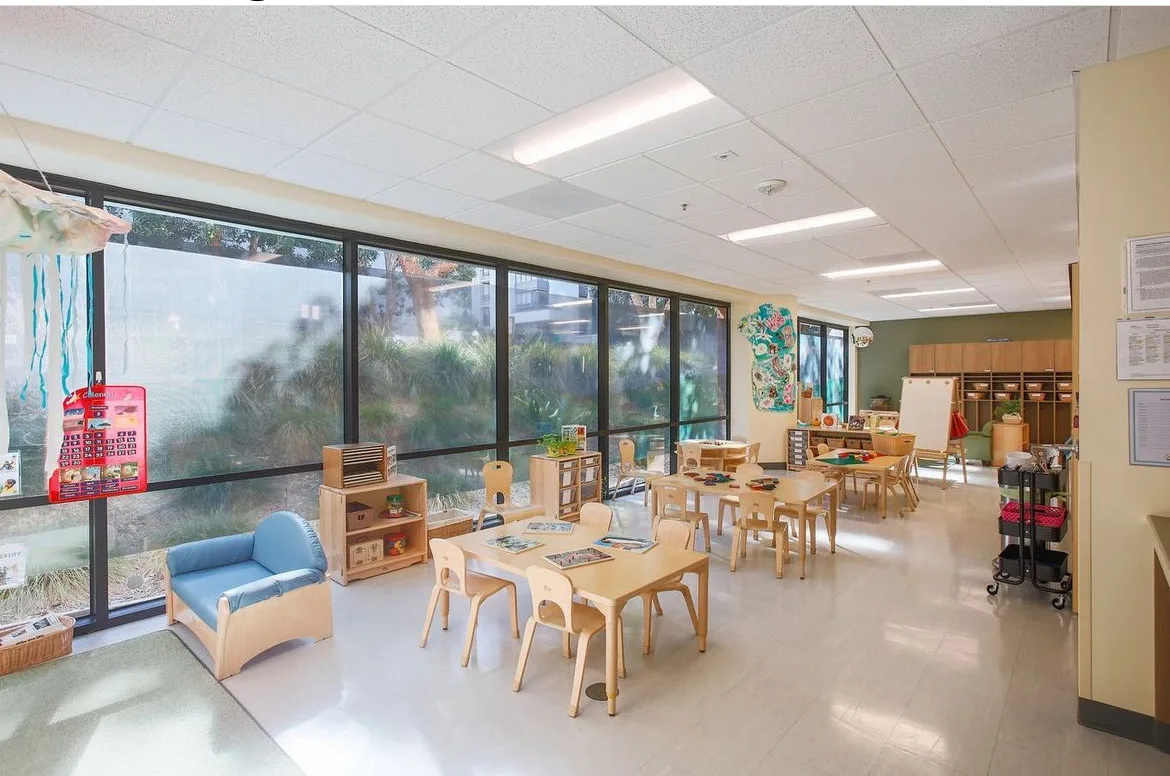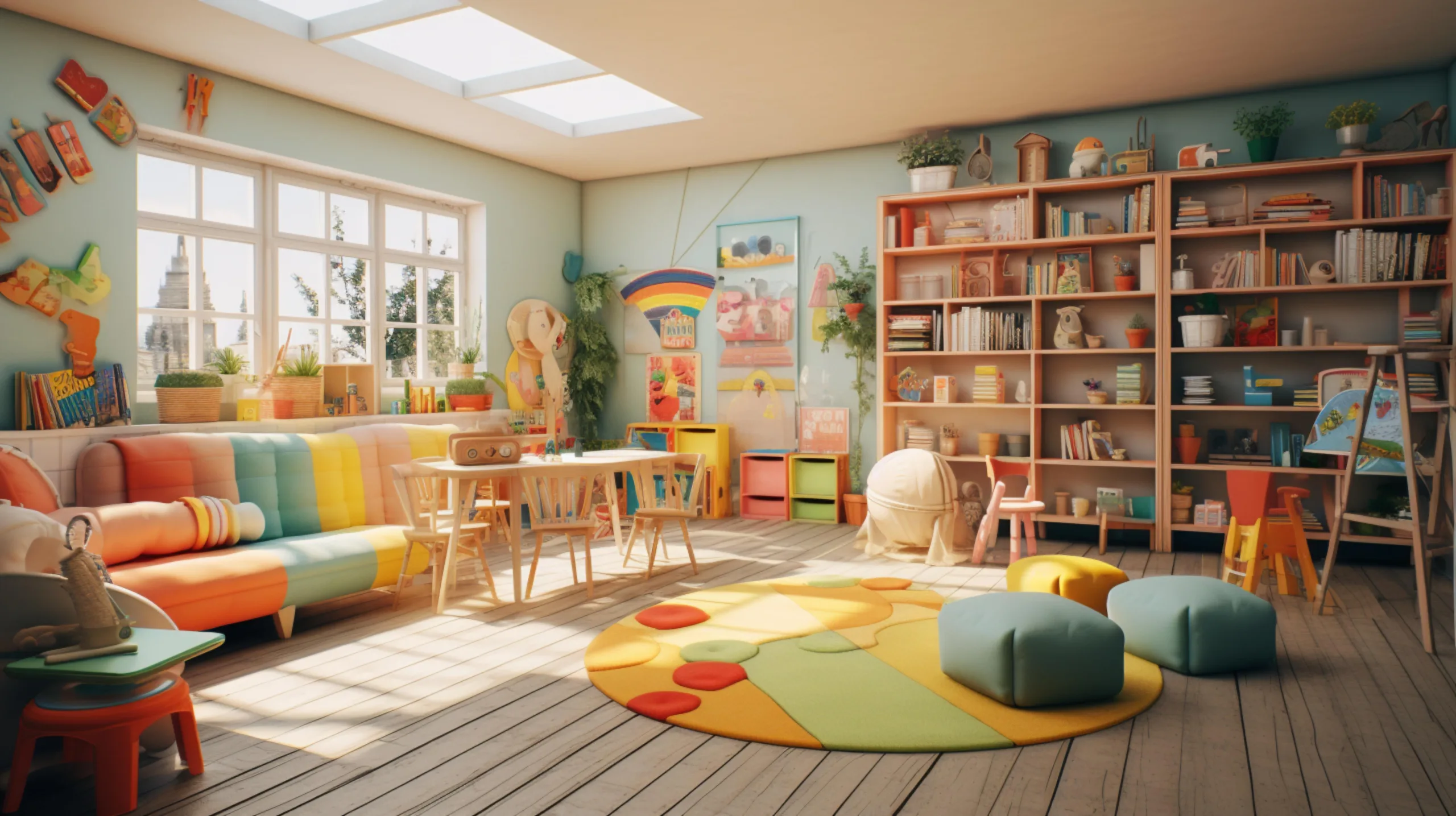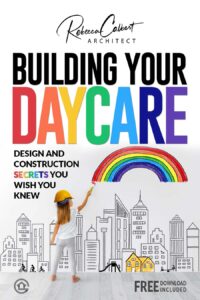Are you looking to create a safe and engaging environment for the kids in your daycare? Look no further! In this article, we will provide you with valuable tips on how to furnish your
daycare space while keeping the needs and preferences of the children in mind. From choosing durable and child-friendly furniture to creating designated play areas, we’ve got you covered. So, let’s get started and transform your daycare into a haven where kids can grow, learn, and have fun!

Layout and Design
Create separate play areas
When
designing your daycare, it’s important to create separate play areas to cater to different activities and age groups. This allows children to engage in play without interruption or interference from other areas. Consider designating areas for active play, quiet play, and even outdoor play if space permits. By providing distinct spaces, you can encourage children to explore different play experiences and prevent overcrowding or conflicts.
Consider the flow of traffic
Efficient traffic flow is essential in a daycare setting to ensure a safe and organized environment. When arranging furniture and play areas, consider the natural movement of children and caregivers throughout the space. Avoid placing furniture or play equipment in high traffic areas, as this can lead to accidents and congestion. Keep pathways clear and ensure that there is ample space for children to move freely from one area to another.
Choose child-friendly furniture
Selecting child-friendly furniture is crucial for ensuring the safety and comfort of the children in your daycare. Look for furniture made from non-toxic materials such as wood or BPA-free plastic to minimize any potential hazards. Additionally, opt for furniture with rounded edges and corners to prevent injuries. It’s also important to choose furniture that is appropriately sized for children, promoting proper posture and ergonomics.
Optimize space with storage solutions
In a daycare,
space optimization is key to providing a functional and organized environment. Utilize storage solutions such as labeled storage bins, shelves, and cubbies to keep toys, materials, and supplies easily accessible and tidy. Including lockable cabinets for hazardous items ensures the safety of both children and staff. By optimizing your space with smart storage solutions, you can create more room for activities and maintain a clutter-free environment.
Safety Considerations
Select furniture made from non-toxic materials
When furnishing your daycare, prioritize the health and safety of the children by selecting furniture made from non-toxic materials. Look for items that are free from harmful chemicals such as lead, phthalates, and formaldehyde. This helps to create a healthy indoor environment and reduces the risk of allergies or sensitivities. Additionally, choosing furniture with non-toxic finishes and paints ensures that children are not exposed to harmful substances even if they accidentally come into contact with them.
Ensure furniture is stable and secure
To prevent accidents and injuries, it’s crucial to ensure that all furniture in your daycare is stable and secure. Check that chairs, tables, and shelving units are well-built and can withstand the active play of children. Look for furniture that has sturdy construction and includes features such as anti-tip mechanisms or anchoring systems to prevent toppling. Regularly inspect and maintain furniture to address any potential hazards or wear and tear.
Avoid sharp edges and corners
Children are naturally curious and prone to accidents, so it’s important to choose furniture with rounded edges and corners. This reduces the risk of injuries, especially in areas where children are likely to be active or play unsupervised. Prioritize furniture with smooth and soft edges, particularly in play areas and seating arrangements. By eliminating sharp edges and corners, you create a safer environment for children to move and explore without the risk of accidental collisions or injuries.
Implement safety measures for electrical outlets
Electrical outlets pose a potential danger to children, so it’s crucial to implement safety measures to protect them. Utilize outlet covers or plugs to prevent children from inserting objects or their fingers into the outlets. Additionally, consider arranging furniture in a way that covers and hides outlets, minimizing the temptation for children to explore them. Regularly inspect outlets for any signs of damage or loose wires and ensure that they are well-maintained and up to code.

Comfort and Functionality
Choose easy-to-clean and durable materials
In a daycare setting, it’s inevitable that spills, messes, and accidents will occur. Therefore, when selecting furniture and materials, prioritize those that are easy to clean and maintain. Look for furniture with stain-resistant surfaces that can be wiped down or sanitized easily. Durable materials such as plastic or vinyl are also more resistant to wear and tear, ensuring that your furniture lasts longer and withstands the rigors of daily use.
Prioritize ergonomic design
Promote the comfort and well-being of children by prioritizing ergonomic design in your daycare furniture. Choose chairs, tables, and seating options that are appropriately sized for children, promoting correct posture and comfort. Consider adjustable features such as height-adjustable chairs or desks to accommodate children of different ages and sizes. By prioritizing ergonomic design, you create a more comfortable and supportive environment for children to learn, play, and rest.
Provide age-appropriate seating options
A daycare should offer a variety of seating options to cater to the diverse needs and preferences of children. Provide different types of seats such as bean bags, floor cushions, and small chairs to accommodate various activities and play styles. Additionally, consider incorporating seating options with varying levels of support and comfort to cater to children of different ages and developmental stages. Providing age-appropriate seating options promotes independence, comfort, and engagement in activities.
Ensure adequate spacing for activities
To maximize comfort and functionality, it’s important to ensure that there is adequate spacing between furniture and play areas. This enables children to move around freely and participate in various activities without feeling cramped or restricted. Allow enough space for children to spread out during play, arts and crafts, or group activities. By providing sufficient spacing, you create a more inclusive and comfortable environment that supports children’s engagement and exploration.
Storage Solutions
Incorporate labeled storage bins
An organized daycare is a happier and more efficient place for both staff and children. Incorporating labeled storage bins helps to create a system and structure for keeping toys, materials, and supplies in their designated places. Use clear bins with labels that clearly indicate what items belong in each bin. This makes it easier for both children and caregivers to locate and return items, fostering independence and promoting a sense of responsibility.
Utilize shelves and cubbies
Shelves and cubbies are essential
storage solutions in a daycare. Utilize these furniture pieces to organize and display items in a visually appealing and accessible manner. Keep frequently used materials and toys within reach on lower shelves to encourage independent play and exploration. Reserve higher shelves for items that require adult supervision or are less frequently used. With well-organized shelves and cubbies, children can easily find what they need and learn the importance of tidiness and order.
Include lockable cabinets for hazardous items
It’s crucial to prioritize safety when it comes to storing hazardous items in your daycare. Include lockable cabinets to ensure that cleaning supplies, medications, or other potentially dangerous items are securely stored and out of reach of children. This prevents accidental ingestion or exposure to harmful substances. Lockable cabinets provide peace of mind for both caregivers and parents, knowing that potentially hazardous items are properly stored and inaccessible to curious little hands.
Create designated areas for personal belongings
Help children develop a sense of ownership and responsibility by creating designated areas for their personal belongings. Provide each child with a labeled cubby or shelf to store their bags, jackets, and personal items. This not only helps keep the daycare tidy but also teaches children organizational skills and respect for their own belongings. By having their own space, children feel a sense of ownership and autonomy, fostering independence and a positive sense of self.

Color and Visual Stimulation
Use bright and stimulating colors
Colors play a significant role in creating a vibrant and engaging environment for children. Use bright and stimulating colors throughout your daycare to capture children’s attention and foster an energetic atmosphere. Incorporate a variety of colors in play areas, seating, and wall decor to create a visually stimulating space. Avoid overwhelming the space with too many contrasting colors and ensure that the color palette remains harmonious and soothing to the eye.
Incorporate educational and playful wall decor
Decorate the walls of your daycare with educational and playful wall decor to create an inspiring and stimulating environment. Incorporate educational posters, alphabet charts, or number displays to promote early learning. Introduce playful and interactive elements such as wall-mounted puzzles or games that encourage children to explore and engage. By using the walls as an additional learning and play space, you provide children with visual stimulation and opportunities for discovery.
Opt for interactive learning tools
To enhance the learning experience in your daycare, opt for interactive learning tools that engage children’s senses and promote hands-on exploration. Incorporate activity tables with sensory elements such as sand or water play. Introduce manipulative toys or interactive learning panels that encourage fine motor skills and problem-solving. By providing interactive learning tools, you create a dynamic and engaging environment that promotes cognitive development and curiosity.
Consider natural lighting and window coverings
Natural lighting contributes to the overall ambiance and well-being of
a daycare environment. Whenever possible, maximize natural lighting by positioning play areas, seating, and workspaces near windows. Ensure that window coverings are child-friendly, such as cordless blinds or curtains with tiebacks, to prevent accidents and entanglement. Natural lighting not only creates a cheerful and inviting atmosphere but also provides children with the benefits of sunlight and a connection to the outside world.
Age-Appropriate Furniture
Purchase small tables and chairs
To accommodate children in different age groups, it’s essential to provide appropriately sized furniture in your daycare. Purchase small, child-sized tables and chairs that allow children to comfortably sit and engage in activities. Ensure that the furniture is sturdy and durable to withstand rough play and frequent use. By providing furniture that is tailored to their size, you promote independence and create a space where children can comfortably participate in learning and play.
Include low shelves for easy access
Low shelves are an essential component of a daycare environment as they promote independence and accessibility for children. Include shelves at a low height that children can easily reach to select and return toys, books, or art supplies. This allows children to independently explore and engage with the materials available to them. Ensure that the shelves are securely anchored to the wall for stability and safety.
Install child-sized sinks and toilets in bathrooms
Creating an inclusive and
child-friendly bathroom environment is crucial in a daycare. Install child-sized sinks and toilets that are low to the ground, allowing children to independently use these facilities. This promotes autonomy and helps develop self-help skills such as handwashing and toilet training. Ensure that the fixtures are properly installed and meet the necessary safety standards to prevent accidents or injuries.
Provide nap mats and cribs for infants
If your daycare caters to infants or young children, it’s important to provide a comfortable and safe sleeping area. Provide nap mats or cribs that meet safety standards and offer a cozy and secure space for infants to rest. Ensure that the sleeping area is free from any hazards such as loose bedding or pillows. Regularly clean and sanitize the sleeping area to maintain a hygienic environment for the infants in your care.
Flexibility and Adaptability
Choose furniture that can be rearranged easily
Flexibility is essential in a daycare setting as the needs and activities of children are ever-changing. Choose furniture that can be easily rearranged to accommodate different play styles, group activities, or learning experiences. Opt for lightweight chairs and tables with easy-to-move features such as wheels or foldable legs. This allows you to quickly adapt the space to meet the changing needs of children while maintaining a safe and organized environment.
Opt for modular storage solutions
Modular storage solutions offer versatility and adaptability in your daycare. They allow you to customize and rearrange storage configurations according to the type and quantity of materials you have. Utilize modular storage units such as shelving systems with adjustable shelves or cubbies that can be reconfigured. This ensures that you can optimize your storage space as your daycare’s needs evolve and fluctuate.
Consider flexible seating options
Flexible seating options provide children with a choice and allow them to adapt their seating preferences to different activities or moods. Consider incorporating items such as bean bags, floor cushions, or balance balls that promote active sitting or flexible seating arrangements. This gives children the freedom to choose a seat that suits their comfort and play style, fostering engagement and creating a more inclusive environment.
Accommodate different age groups and activities
In a daycare, it’s important to accommodate the different age groups and the wide range of activities that take place throughout the day. Provide versatile furniture and play equipment that can cater to various developmental stages and play styles. Consider items such as adjustable tables or multi-purpose furniture that can be transformed to meet the needs of different age groups. By accommodating different age groups and activities, you create a flexible and adaptable environment that fosters growth and learning.
Organization and Labeling
Implement a system for organizing toys and materials
Organizing toys and materials is essential for maintaining a tidy and efficient daycare environment. Implement a system where each item has a designated place. Categorize toys and materials into different groups, such as blocks, puzzles, or art supplies, and assign specific storage bins or shelves for each category. This creates a clear and consistent structure that enables children to find and return items independently.
Label shelves and bins for easy identification
Labels are a powerful tool in organizing and maintaining order in a daycare. Label shelves and storage bins with clear and visible labels that indicate the contents inside. Use words, pictures, or a combination of both to help young children identify the items and encourage early literacy skills. By labeling the storage areas, you promote independence and empower children to take responsibility for tidying up and locating their favorite toys or materials.
Establish clear zones for various activities
Designate specific areas within your daycare for different activities to promote structure and organization. Create a cozy reading corner with a bookshelf and comfortable seating for quiet activities. Set up an art area with tables, chairs, and art supplies for creative expression. By establishing clear zones for various activities, children can understand and follow the intended purpose of each area, allowing for smooth transitions and focused engagement in different activities.
Regularly declutter and rotate toys
To avoid clutter and maintain a fresh and engaging environment, it’s important to regularly declutter and rotate toys. Regularly assess the toys and materials in your daycare and remove any broken or unused items. Consider implementing a toy rotation system where you periodically swap out toys to keep children excited and engaged. This allows you to maximize the utilization of your resources and ensure a variety of play experiences for the children in your care.
Accessibility and Independence
Install low hooks for hanging coats and backpacks
Promote independence and responsibility by installing low hooks for children’s coats and backpacks. By placing the hooks at a child’s eye level, you enable them to easily hang up their belongings without adult assistance. This fosters autonomy and helps develop self-help skills. Additionally, low hooks minimize the risk of items falling off, allowing children to easily locate and retrieve their personal belongings.
Provide step stools for reaching sinks and tables
Children often need assistance in reaching sinks and tables, especially in areas such as bathrooms or workspaces. Provide sturdy step stools that enable children to independently access these areas without relying on adult support. Ensure that the step stools are of an appropriate height and have non-slip surfaces for safety. By providing step stools, you empower children to take care of their personal hygiene and actively participate in activities.
Label drawers and cabinets at children’s eye level
To encourage independence and promote tidiness, label drawers and cabinets in your daycare at children’s eye level. Utilize clear and easily readable labels that indicate the contents of each storage space. This allows children to locate and return materials independently, fostering a sense of ownership and responsibility. Make sure the labels are securely attached to withstand daily use and maintain their visibility.
Encourage self-help skills with open storage solutions
Open storage solutions, such as low shelves with open compartments or baskets, encourage children to actively participate in keeping the daycare tidy. Organize items in an accessible and inviting manner, enabling children to independently select and return toys or materials. By providing open storage solutions, you promote self-help skills, foster a sense of responsibility, and create a visually appealing environment that stimulates children’s curiosity and engagement.
Consideration for Special Needs
Adjust furniture for wheelchair accessibility
When designing and furnishing your daycare, it’s important to consider the needs of children with physical disabilities. Ensure that furniture is arranged in a way that allows wheelchair accessibility, providing enough space for maneuverability. Choose tables and chairs that can accommodate wheelchairs comfortably. By creating an inclusive environment that is accessible to children with physical disabilities, you promote a sense of belonging and equal participation for all children in your care.
Create sensory-friendly spaces
Children with sensory sensitivities may benefit from having dedicated sensory-friendly spaces in your daycare. Provide areas that are quiet and calming, with dimmed lighting or the option to control sound levels. Use soft materials such as bean bags or floor cushions for comfortable seating. Incorporate sensory elements such as textured walls or tactile toys to engage and soothe children with sensory needs. By creating sensory-friendly spaces, you create an inclusive environment that supports the diverse needs of all children in your care.
Include adaptive equipment and seating
Ensure that your daycare is equipped with adaptive equipment and seating to meet the unique needs of children with physical disabilities. Include items such as specialized chairs, standing frames, or supportive cushions to provide comfort and promote proper posture. Consult with professionals, such as occupational or physical therapists, to determine the specific adaptive equipment or seating that may be required for individual children. By incorporating adaptive equipment, you create an inclusive environment that supports the participation and well-being of all children.
Consult with professionals for specialized requirements
When considering the needs of children with special needs, it’s important to consult with professionals who specialize in the field. Occupational therapists, physical therapists, or early childhood development experts can offer guidance and support in creating a daycare environment that meets the specific requirements of children with diverse needs. By seeking professional advice, you ensure that your daycare is equipped to provide appropriate care, support, and inclusion for all children, regardless of their abilities or challenges.
Conclusion
Designing and furnishing a daycare requires careful consideration of various factors to create a safe, stimulating, and inclusive environment for children. By following the tips outlined in this article, you can optimize your daycare’s layout and design, prioritize safety, promote comfort and functionality, implement efficient storage solutions, create visually stimulating spaces, select age-appropriate furniture, organize effectively, foster independence, and accommodate special needs. Remember, a well-designed and child-centered daycare not only enhances the experience for children but also creates a positive and inviting atmosphere for caregivers, parents, and staff.








